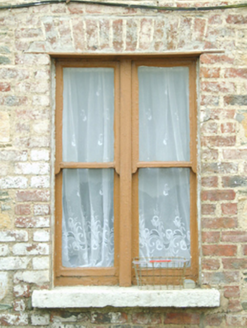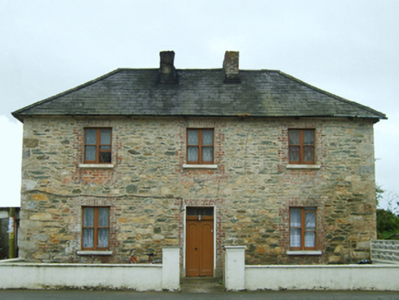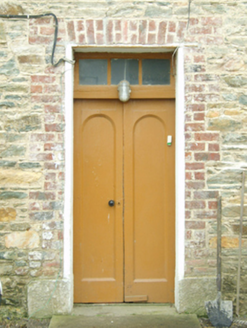Survey Data
Reg No
15704729
Rating
Regional
Categories of Special Interest
Architectural, Historical, Social
Original Use
RIC barracks
In Use As
House
Date
1842 - 1901
Coordinates
299007, 109576
Date Recorded
19/09/2007
Date Updated
--/--/--
Description
Detached three-bay two-storey constabulary barrack, occupied 1901, on a rectangular plan; three-bay single-storey lean-to return along rear (south) elevation. Occupied, 1911. Attacked, 1921. Hipped slate roof; lean-to slate roof (south), clay ridge tiles, paired rendered red brick Running bond central chimney stacks with capping now missing, and cast-iron rainwater goods on slate flagged eaves retaining cast-iron downpipes. Repointed coursed rubble stone walls originally fine roughcast with hammered rubble stone flush quoins to corners; fine roughcast surface finish to side (east) elevation. Square-headed central door opening with threshold, and red brick block-and-start surround framing timber panelled double doors having overlight. Square-headed window openings in bipartite arrangement with cut-granite sills, timber mullions, and red brick block-and-start surrounds framing one-over-one timber sash windows. Square-headed central door opening to rear (south) elevation with red brick block-and-start surround framing timber door having overlight. Road fronted on a corner site with rendered piers to perimeter having cornice capping.
Appraisal
A constabulary barrack representing an integral component of the later nineteenth-century built heritage of south County Wexford with the architectural value of the composition suggested by such attributes as the compact plan form centred on a restrained doorcase; and the diminishing in scale of the openings on each floor producing a graduated visual impression with those openings showing pretty bipartite glazing patterns. Having been reasonably well maintained, the elementary form and massing survive intact together with substantial quantities of the original fabric, both to the exterior and to the interior, including some fittings showing evidence of an attack (1921) by a local faction during "The Troubles" (1919-23; The New York Times 16th May 1921, 1): however, the disintegration or removal of the surface finish has not had a beneficial impact on the character or integrity of a constabulary barrack making a pleasing visual statement in a rural village setting presently (2007) undergoing extensive "suburban" development. NOTE: Occupied (1901) by Thomas Walsh (----), 'Sergeant [in] Royal Irish Constabulary' (NA 1901); and (1911) by Hugh Gallagher (----), 'Acting Sergeant' (NA 1911).





